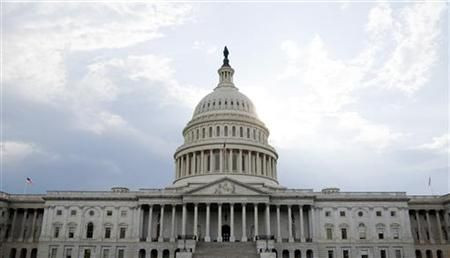Federal Employees Paid 26% Less Than Private-Sector Counterparts: BLS

Federal government employees are paid about 26 percent less than those with similar jobs in the private sector, according to a new report from the U.S. Bureau of Labor Statistics (BLS), a pay gap that refutes statements from multiple Republican presidential candidates who have insisted the federal workforce has experienced excessive job growth and wage increases under President Barack Obama.
The BLS presented the figures to the Federal Salary Council last week, an advisory group of federal agency officials, union representatives and outside pay experts. The gap between government and public salaries increased by 2 percent from last year while federal salary rates were frozen.
In December 2010, Obama signed a bill that included a pay scale freeze to all civilian federal employees through December 2012, a move that White House claimed would save $28 billion over a five-year period.
Meanwhile, private sector wages and salaries rose by about 1.6 percent between March 2010 and March 2011
Of the 34 locality pay areas analyzed, only Miami, Fla. and Washington, D.C. did not see the pay gap broaden.
Statistics Refute GOP Contention
The report goes against the claims of several GOP presidential candidates who have insisted bloated government salaries are contributing to the federal government's budget woes. For instance, while speaking at an event organized by Americans for Prosperity last Friday, former Gov. Mitt Romney argued that federal salaries need to be reevaluated because, public servants shouldn't get a better deal than the taxpayers they work for.
Romney cited a 2010 study from the Heritage Foundation to support his accusations, which states that federal employees make as much as 30 to 40 percent more than comparable workers in the private sector once wages and benefits were included.
However, a report from the Project on Government Oversight (POGO) released in September concluded the Heritage Foundation analysis presents a number of methodological problems that call into question the validity of its finding and recommendations. The POGO analysis reports the Heritage study based its findings off the BLS' Current Population Survey (CPS), a household employment survey with a sample size considerably smaller than the National Compensation Survey (NCS), the source used by the BLS in its report to the Federal Salary Council.
The CPS includes data from about 60,000 households, while the NCS sampling frame is made up of more than 5,400,000 business respondents.
Moreover, while the Heritage report claims federal employees receive annual benefits packages worth $32,115, compared to private sector employees' $9,882, the Office of Management and Budget calculates that federal employees receive a benefits package that is 36.25 percent of their annual salaries. Meanwhile, the BLS calculates that private sector employees who work for large corporations receive annual benefits packages worth about 33.5 percent of their annual salaries.
While some conservatives have pushed for a reduction of government jobs as a way of repairing state and federal government's budget gaps, it looks like many public employees are barely hanging onto their jobs as it is. About 24,000 public sector jobs were lost last month, according to the BLS, while 104,000 private sector positions were added. Since the beginning of 2010, the government has cut an average of 23,000 jobs per month.
© Copyright IBTimes 2024. All rights reserved.





















